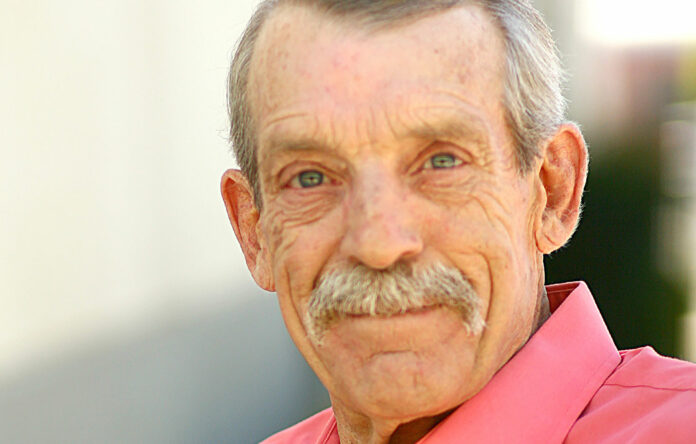I was attending a baseball game on the Greenfield Elementary School grounds when a car pulled up next to the entrance gate on 10th Street. It was a black four-door Ford, just like the ones the FBI drove on television, with two men in it. One man got out and walked to the end of the old wooden bleachers and signaled to a local man in the crowd who quickly left his seat and got in the car and rode away.
It was October of 1962 and the local man was needed for his military expertise. We did not know it at the time but were soon to find out the reason for the quick departure; it became known as the Cuban Missile Crisis and was about as close to World War III as it gets. It was a scary time.
When high-altitude reconnaissance photography showed the presence of Russian missile sites and missiles on the island of Cuba, the U.S. military went on high alert, and across the land ground troops, pilots and seaman by the tens of thousands made ready for war. Of course, most of us were unaware of all the mobilization but we were aware, thanks to Walter Cronkite and other worthy journalists of the time, of what was happening 90 miles off the Florida coast.
I can vividly recall the photographs showing missile site construction and the grainy, black and white film footage of the line of U.S. Navy ships creating a blockade against Russian ships to prevent further supplying of the island with nuclear weapons. And I remember watching the televised speech of President Kennedy telling us of the danger and what the government was doing to rid the menace to our peace by any means short of all out war.
Over a 12-day period, we watched and waited “with bated breath,” as the saying goes, as the crisis was quelled by détente and compromise; Mr. Khrushchev would withdraw Russian missiles from Cuba immediately while the United States would, in six months’ time, withdraw our missile site in Turkey. And so ended one of the scariest events of what was known as The Cold War. But while the immediate danger was over, our fear and hatred, no other words really fit, of the Russians did not. The Russians were communists and communism was bad; that much we knew. But it has not always been so with communism is America.
After the Russian Revolution in 1917, when the old tsarist rule was overthrown by Marxists, the theory of communism gained footage in the world and the United States was for the next three decades the home of many communists and socialists. In 1936 the newspaper with the largest circulation in America was the Daily Worker, a publication of the American Communist Party. Many elected officials from local, county, state and federal governments were avowed communists and socialists and that was acceptable at the time.
Because during this period many in the laboring class worked long hours for low pay under often unsafe and unhealthy conditions, there was a call to action to end such practices. Minors working in coal mines, garment factories and other production jobs and the absence of any type of worker pension or health plans made management the target of union organizers. One organizing strategy was mass gatherings where protest songs that railed against lousy working conditions were used to rally the workers.
Some of the committed communists were musicians who became well known at the time, and for years afterward. Woody Guthrie was the foremost of these troubadours. (I remember at many 4-H meetings singing “This Land Is Your Land” and never knowing that it was written as a protest song, an effort at counterpoint to Irving Berlin’s popular “God Bless America.”) Others that traveled across the land to dozens of union-organizing gatherings singing protest songs were Pete Seeger and Burl Ives with the likes of such writers as John Steinbeck watching from the sidelines and gathering ideas for articles and books. The novel “In Dubious Battle” was one such product of the times.
The efforts of these union organizers, coupled with the socialism of President Franklin Roosevelt’s New Deal administration, made for a ready acceptance of socialism and communism in American society. So, what happened?
Uncle Joe Stalin and his cronies is what happened. When the supreme leader of what became known as the Union of Soviet Socialist Republic took Marxism and turned it on its head with a war against religion, education, politics and anything democratic, which resulted in the purge of millions of people he considered enemies of the state he gave communism a bad name and the Popular Front, the name for combined socialist and communist efforts in America, began a slow demise. Today the communist influence in America is minimal but socialism still has a foothold on our soil.
What, you ask, is the point of all this? Well, it would seem that decades after the fall of the USSR and the breaking up of the soviet satellite system, touted as the end of The Cold War, the threat of communist aggression is once again evident. Mr. Putin has now been the head honcho in Russia for 22 years and he is an old school, former KGBer who is intent upon making life hard on the people of the Ukraine.
As I write this, tensions are high along the border between these two countries as Russian troops amass and Ukrainians, woefully outnumbered, steel themselves for a ground war. Of course there are negotiations taking place, but once again a country finds itself under the threat of aggression and once again young people on both sides watch fearfully as this unfolds, just as we did 60 years ago. For the sake of Svitlana, the one Ukrainian I know here in King City, and for humanity, I hope all will end without bloodshed.
Take care. Peace.














